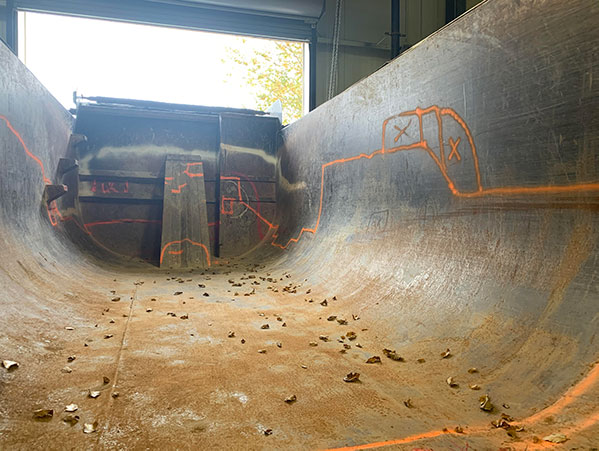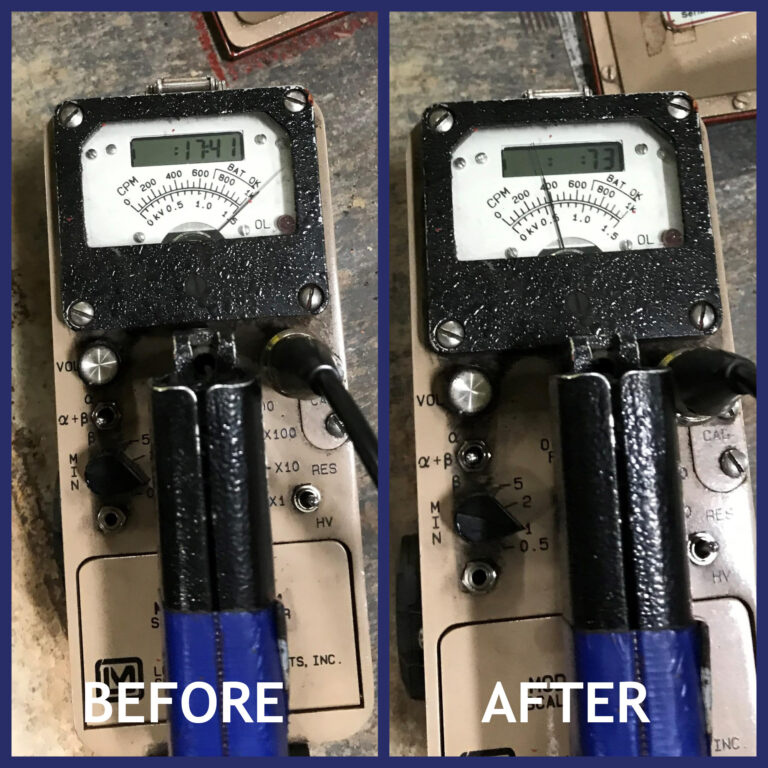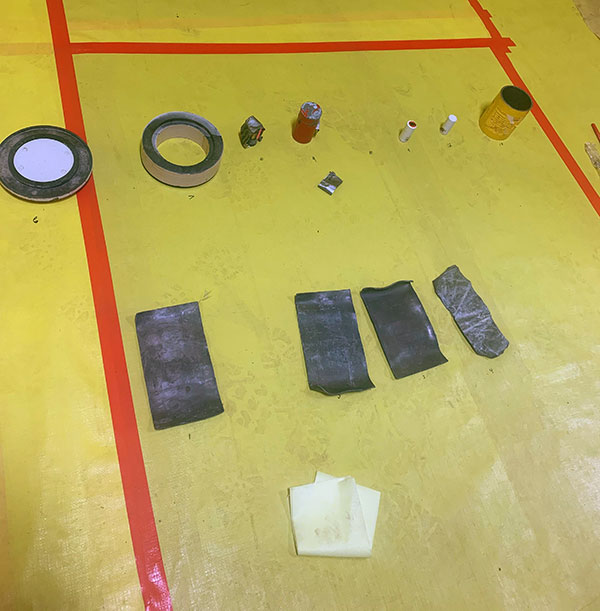Nuclear Decontamination by Laser Ablation
THE CHALLENGE
PROJECT DETAILS

Client: Philotechnics Ltd.
Location: Oak Ridge, TN
Company Overview: Philotechnics Ltd. processes and transports radwaste. They provide radioactive and mixed waste management solutions, including decontamination and decommissioning services, radiological health physics staff augmentation, health and safety plan development, and radiological qualification training solutions.
Adapt Laser agreed to provide the laser equipment and on‐site technical support for DECON testing in return for the company providing detailed test results. These included the type and level of contamination reduction as well as any data related to environmental, health, and safety concerns.
The goal of the testing was to evaluate if lasers could be a more effective, environmentally-friendly alternative to industry-standard methods of nuclear decontamination, such as abrasive grinding with power tools. Prior to testing, Adapt Laser provided training to ensure safe and proper use of the laser.
TESTING PROCESS
MATERIALS TESTED
CARBON-STEEL

Source: Contaminated dump truck beds used in the decommissioning of a nuclear site in Oak Ridge, TN.
Contaminant Details
- Varying isotopic consistencies, primarily Uranium 238
- Largely Beta emitters, with very low Alpha contamination

Results
- Lighter, Beta particles were found more deeply into the materials than heavier Alpha particles
- Varied results based on Alpha/Beta concentrations, but, overall, highly effective in time efficiency, environmental protection, ALARA principles, and manual exertion requirements, compared to other options
LEAD

Source: Contaminated lead bricks, lead containers used for transporting radiological materials, and other items from various locations.
Contaminant Details
- Mostly Alpha contamination, especially Radium contaminants
Results
- 100% efficiency of contamination elimination
- Up to 60% time-efficiency improvement
ENVIRONMENTAL PROTECTION
TEST RESULTS
For the small areas (15 in2), the laser treatment took around 25 seconds to remove all foreign materials from the base layer of the carbon-steel. For lead, the ablation time was even less. Decontamination for the large area (138ft2) required only four hours of work from one individual, as compared to the 200 man hours needed to complete the task using the standard method of power tool grinding. For Alpha-contaminated materials, the lasers were able to achieve 100% removal effectiveness of the radiological contaminants.
Data also showed a great improvement to operator safety and a significant reduction in radwaste produced. These findings are very promising for the future use of laser ablation as an effective, environmentally-friendly solution for nuclear decontamination.
